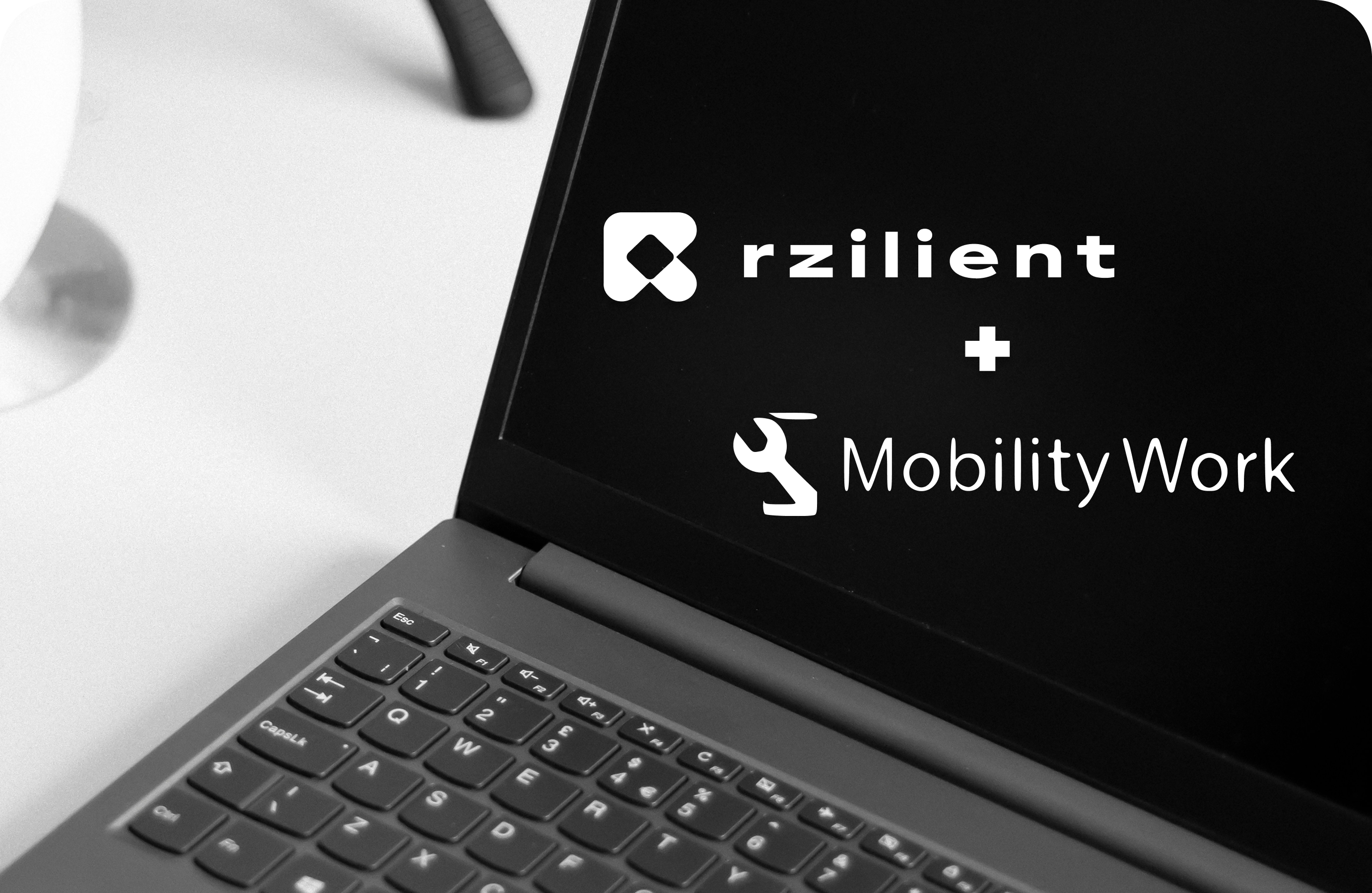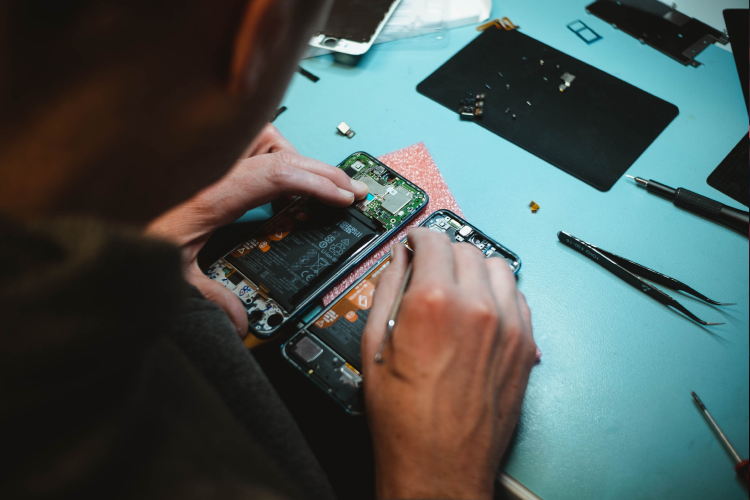The computer asset inventory guide

Benefit from effective IT support
Discover our all-in-one solution
Managing a computer park means juggling dozens (or even hundreds) of equipment, software and data.
So sometimes, it's complicated to keep a clear and accurate view of all assets, and especially to whom they are attributed.
If the list of equipment and software used internally is not kept up to date for a few days, weeks or months, problems accumulate: lost or unused devices, phantom licenses, security breaches... And returning to a control situation requires a lot of time and effort.
That's where it comes in The inventory of computer equipment. This exercise, which is often overlooked, is however a real asset in optimizing IT asset management.
For reasons of security, but also for productivity and budget reasons, maintaining an up-to-date inventory of computer equipment is essential. And contrary to what one might think, the IT teams are not the only ones to see the benefits of centralized inventory. It is a common topic that can have an impact on all teams. A few examples:
- Les finance teams can track hardware and software expenses easily
- Les HR and People teams can automate the preparation of a workstation during onboarding and facilitate the recovery of equipment during offboarding
- Les managers can have a clear view of the software used and licenses granted for their teams
- And finally, the employees For their part, they gain in productivity thanks to fluid computer processes that are shared by all.
So how do you carry out an inventory of your computer equipment effectively? What are the mistakes to avoid? And above all, how do you get the most out of it? In this comprehensive guide, we explain everything you need to successfully inventory your computer equipment.
What is a computer asset inventory?
One computer equipment inventory, it is a detailed map of all the IT assets of a company. This includes:
- Physical equipment : computers, servers, printers, smartphones, tablets.
- The software : installed applications, associated licenses and validity dates.
- Usage information : location, device status, associated users.
The idea is not just to create a static list. Inventory allows you to track your assets in real time, anticipate maintenance needs, and ensure that your IT infrastructure is aligned with business needs.
A good inventory is also a strategy to gain visibility, reduce costs, and improve the productivity of your teams.
Why take an inventory of your computer equipment?
Are you still wondering why invest time in this exercise? Here are several compelling reasons.
Manage your stocks
Without accurate monitoring, unused or forgotten equipment accumulates in your closets, thus losing performance and value. Having a view of these dormant devices allows you to reassign them to a next employee, so you don't have to buy another one.
But an inventory also makes it possible to:
• Identify duplicate assignments (e.g. an employee who has two screens assigned)
• Optimize the allocation of devices between teams (e.g. a developer using equipment that is less efficient than a financial one)
Control your costs
A poorly managed computer park is often a financial waste. Between forgotten software licenses, underused devices, and unexpected repairs, expenses quickly soar.
With a rigorous inventory, you identify:
• Equipment to be reassigned rather than replaced.
• Software and/or licenses that are no longer used, but still invoiced.
In the long run, this allows you to reorient your budget towards strategic priorities.
Perform controlled onboarding and offboarding
When an employee arrives or leaves the company, accurate inventory simplifies the management of devices and software.
• THEOnboarding of a new employee is accelerated: he immediately receives the equipment adapted to his position.
• THEOffboarding guarantees data security: devices are recovered and reset.
Strengthen your company's cybersecurity
An up-to-date inventory makes it possible to quickly identify:
• Unprotected devices: missing antivirus, lack of updates
• Software that does not comply with security regulations
This vigilance reinforces the protection of your network against cyberattacks, an absolute priority in a context where threats are increasing every year. Once online, you can consult our guide on cybersecurity.
Keep your IT fleet up to date
An inventory is also a roadmap for your equipment. You know:
• When to expect software updates.
• What devices need to be replaced or repaired.
For example: a computer whose warranty expires soon can be replaced or extended, thus avoiding costly service interruptions.
How to carry out your computer inventory?
A successful inventory cannot be improvised. Here are the key steps to organize and carry out this mission.
Prepare the inventory
Choose the goals of your inventory
Defining your goals in advance will help you structure your approach. Ask yourself these questions:
• What do you want to know about your computer equipment?
• Do you want to optimize costs, improve security, or prepare for an audit?
Your answers will determine what information to collect and what tools to use.
Choose the method and tools used
Why use inventory software?
One IT asset inventorization tool like the one from Rzilient will make you gain a lot (a lot, a lot!) of time. It allows:
- Automatic data collection
- Centralization of information in a dashboard
- Real-time monitoring of changes
And manual inventory?
Manual inventory may be appropriate for a small business, but it is still time consuming and less accurate.
Advice: If you manage more than 50 devices, an automated tool becomes essential.
Plan the inventory steps
To avoid chaos, structure your approach:
- Divide your fleet into categories (hardware, software, licenses).
- Assign specific tasks to your IT teams or entrust these tasks to the experts at Rzilient.
- Set clear deadlines for each stage.
Connect your HRIS
A first step to a successful inventory is to connect your human resources information system (SIRH) to your computer asset management tool. Why? Because your employees are the end users of your equipment.
When your HRIS is integrated, you can:
- Easily track equipment allocation : who uses what, and since when?
- Centralize data on HR movements: onboarding, internal mobility, departures, etc.
- Automate updates of the inventory when users change.
When an employee is added to the HRIS, his profile is automatically synchronized with rzilient You immediately know what equipment to assign to him and, in the event of departure, you are sure to recover all the equipment.
Good to know : A smooth integration between your HRIS and your IT tool also simplifies the processes of Onboarding And ofOffboarding, essential to avoid equipment or data losses.
Inventory your equipment thanks to MDM
Computer hardware (computers, smartphones, printers, tablets, etc.) is at the heart of your computer equipment. To maintain total control over these devices, the Mobile Device Management (MDM) is an indispensable tool.
What is MDM?
One Full article on Mobile Device Management is already online if you want more information.
In short, MDM is a solution that allows you to manage, track, and secure your devices remotely.
How do I create an inventory from an MDM?
- Choose the MDM that fits your needs (discover our guide here)
- Launch an enterprise-level deployment campaign with our teams
- Connect your MDM to the Rzilient platform (or let our teams do it)
- That is all! A complete inventory of your computer equipment fleet will then appear on your Fleet area.
How do you use MDM to keep your inventory up to date?
- Synchronize your equipment with MDM as soon as they are purchased or leased.
- Automatically gather key information: model, serial number, battery status, and software version.
- Assign equipment to an employee when it is put into use or put it into stock as soon as it is no longer used
Good to know: The IT inventory tool of Rzilient includes advanced MDM features that allow you to combine simplicity and efficiency in managing your assets.
List your software and licenses
Software is an important part of your IT assets. However, they are often poorly monitored, leading to unnecessary expenses or risks of non-compliance.
How to inventory your software?
In order to make a complete list of all the software used by your teams (office automation, business tools, cloud applications, etc.) rzilient works with trusted partners to automatically audit and detect all your active software and licenses.
These three steps — connection to the HRIS, management via MDM and software directory — are essential for a complete and optimized inventory. Thanks to them, you gain visibility, reduce your costs and improve the overall security of your IT equipment.
Rzilient accompanies you in carrying out your computer equipment inventory
Are you lost? Don't panic! At Rzilient, we simplify the management of your computer equipment with intuitive and efficient tools.
With Rzilient you can:
• Identify and monitor your assets in real time.
• Automate alerts for maintenance.
• Identify obsolete equipment to optimize your costs.
Ready to save time and increase efficiency? Contact us today!






